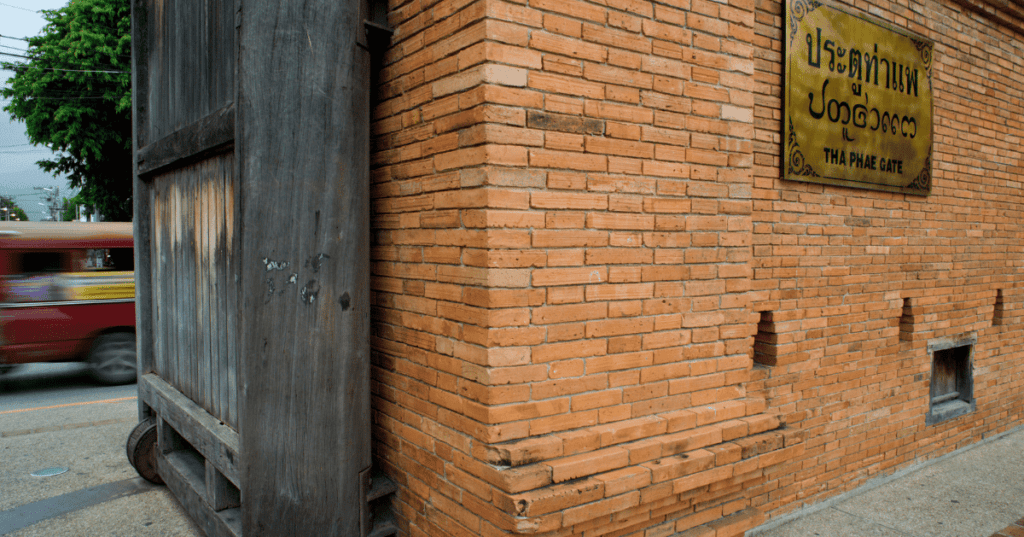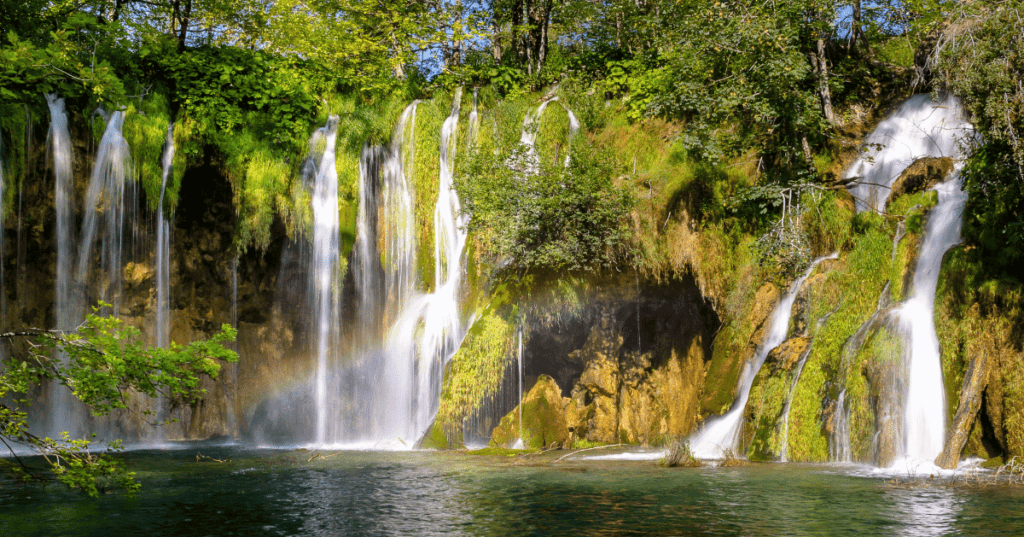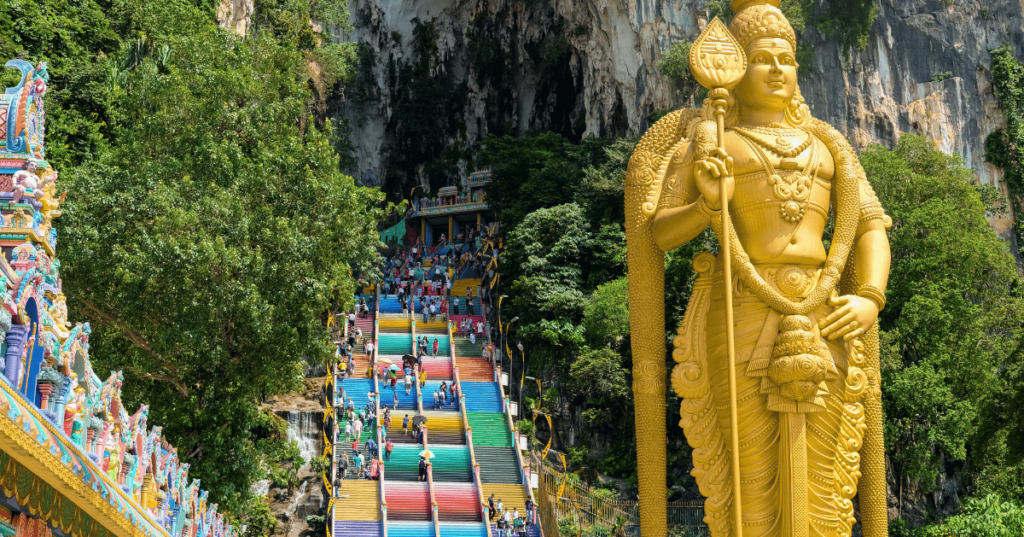Introduction to Tha Phae Gate—Chiang Mai’s Old City Walls
When you visit Chiang Mai, you must attend Tha Phae Gate. It’s not just an old gate; it’s where the city’s history meets modern life. Long ago, it was part of the city’s defenses. Now, it’s a lively spot for street festivals and local activities.
Tha Phae Gate is where I begin every trip to Chiang Mai. This is a great place to visit if you enjoy walking around, street performances, or history. It’s right in the center of everything, so it’s a great place to start your day.
In this post, I’ll tell you about Chiang Mai Old City Walls and Gates. Why Tha Phae Gate is so special, its history, and what you can do around it. Ready to explore? Let’s go!
The History of Tha Phae Gate
When Chiang Mai was the capital of the Lanna Kingdom, Tha Phae Gate was part of the city walls. It wasn’t as busy as it is now. Back then, it was a vital part of the city’s defenses, preventing invaders from entering and controlling who left.
Among the five entrances to the city, the gate was an important point of entry for easterners and tourists. It was an important point of entry for easterners and tourists.
For centuries, Tha Phae Gate has endured battles, weather, and time, yet its historical charm has been meticulously preserved. Today, it stands as a symbol of Chiang Mai’s past and resilience. Despite the disappearance of most of the city’s old walls, the gate serves as a reminder of the city’s significant role in the region’s history.
Architectural Features of Tha Phae Gate
It appears at first glance that Tha Phae Gate is just an old brick house, but this is more than just that. In addition to its iconic, rustic look, Tha Phae Gate is a classic example of traditional Lanna architecture. While it’s not overly decorative or fancy, what makes it stand out is its simplicity, strength, and practicality, like the city it once protected.
The gate’s design is straightforward, with a square layout and a few towers that once helped defend against enemies. If you look closely, you’ll notice the small windows in the towers, which were used by archers to watch for threats. The symmetry of the gate also makes it pretty eye-catching, especially when the sun hits it at just the right angle.
You must be surprised to learn that Tha Phae Gate has been restored several times over the years, but the restorations have kept its original design intact, so what you see today is pretty close to how it looked centuries ago. And while most people visit the gate for its historical significance, it’s also become a popular spot for photos—especially during sunset when the light makes the red bricks glow.
Exploring Chiang Mai’s Old City Walls
In the past, walls and a moat surrounded Chiang Mai’s old city to keep out invaders. Most of the original walls are long gone. You can still find parts of them around the city, and they give you a real sense of what Chiang Mai was like back in the day.
The walls were built in the 13th century and stretched around the entire square-shaped old city. Tha Phae Gate is just one of the five gates that provided access to the city, but you can still find other gates like Suan Dok Gate and Chiang Mai Gate standing today, though they’ve also been restored.
You’ll see here small sections of the remaining wall. Most are made of the same red brick as Tha Phae Gate. The walls still tell the story of Chiang Mai’s past as a fortified city, although they are not as tall or intact as they once were.
It is simple to picture how everything worked together to keep the city safe, given that a moat surrounded the ancient city.
Tha Phae Gate Today: Cultural and Social Hub
This gate is more than a piece of history—it’s an important place where people come together. It’s a popular place to hang out, take photos, and just take in the energy. Locals, tourists, street performers, and vendors all mingle around it daily. You might even catch a live band or traditional dance if you’re lucky.
Everyone congregates here to start the festivities during Songkran, the Thai New Year, which turns it into the epicenter of the largest water fight in the city. For Loy Krathong, the gate lights up with floating lanterns and krathongs drifting down the river.
It is a quiet afternoon or a full-blown festival. Tha Phae Gate is where Chiang Mai’s history and daily life come together. There’s always something to see or do—it’s the heart of the city.
Best Things to Do Around Tha Phae Gate
This iconic gate is located in the heart of Chiang Mai’s Old City. It offers a unique blend of history and modern attractions. It’s more than just a historical landmark; it’s a hub of culture and activity in Chiang Mai.
Here’s a curated list of the best things to do around Tha Phae Gate. You can find something to suit everyone’s interests.
1. Wander Through the Old City Walls
Start your exploration by taking a stroll along the remnants of Chiang Mai’s ancient city walls. These walls, which once protected the city from invaders, offer a glimpse into the past.
For those who are interested in history, the area surrounding Tha Phae Gate offers some of the best-preserved portions of the walls, making it a great place to see the city’s medieval defenses.
2. Explore the Local Markets
The Tha Phae Gate area is home to a vibrant array of markets. The Tha Phae Walking Street Market, held every Sunday evening, is a must-visit. Here, you’ll find everything from handcrafted souvenirs and local art to delicious street food.
Sample local delicacies like khao soi (a rich coconut curry noodle soup) or freshly made spring rolls. Don’t miss out on unique items such as traditional Thai clothing, handmade jewelry, and artisanal crafts.
3. Visit the Historical and Cultural Sites
Several important temples and cultural sites are within walking distance of Tha Phae Gate. Wat Chiang Man, the oldest temple in Chiang Mai, is just a short walk away.
Known for its impressive chedi and ancient Buddha statues, it’s a serene spot for reflection and appreciation of Thai architecture. Another notable site is Wat Phra Singh, famous for its beautiful Lanna-style architecture and the revered Phra Singh Buddha.
4. Relax at Local Cafés and Eateries
The area around Tha Phae Gate is brimming with charming cafés and restaurants. Take a break from sightseeing and unwind with a coffee or a meal at one of the many establishments.
Popular spots include Ristr8to, renowned for its artisanal coffee, and The Salad Concept, which offers fresh and healthy dining options. These cafés provide delicious food and drinks with a cozy atmosphere perfect for people-watching.
5. Enjoy a Traditional Thai Massage
After a day of exploring, treat yourself to a relaxing Thai massage. There are several massage parlors near Tha Phae Gate where you can indulge in a traditional Thai massage or a soothing foot rub. These treatments are not only relaxing but also a great way to experience a key aspect of Thai culture.
6. Discover Local Arts and Crafts
Chiang Mai is known for its vibrant art scene, and the area around Tha Phae Gate is a hub for local artists and craftsmen. Visit galleries and workshops to see traditional Thai art, including intricate paintings, wood carvings, and silk weaving. Many of these spaces also offer workshops where you can try your hand at creating your artwork.
7. Take a Bike Tour
Consider renting a bicycle and joining a guided bike tour for a unique perspective on the city. These tours often cover the Old City’s key landmarks and offer insights into Chiang Mai’s history and culture. It’s a fun and eco-friendly way to see more of the area and learn about its significance.
8. Experience Local Festivals
You might get lucky and visit during one of Chiang Mai’s famous festivals. Yi Peng Lantern Festivals and Songkran (Thai New Year), Tha Phae Gate is a prime location for cultural events. The area becomes vibrant during these festivals, with colorful parades, dancing, and decorations.
Tips for Visiting Tha Phae Gate in 2024
Visiting Tha Phae Gate is a delightful experience, but like any popular tourist destination, a little preparation can go a long way. Here are some updated tips to help you make the most of your visit to this historic Chiang Mai landmark in 2024:
1. Plan Your Visit Timing: Tha Phae Gate is a bustling area, especially during the day and weekends. To avoid crowds and get the best photos, consider visiting early in the morning or later in the afternoon. The Sunday Walking Street Market, which starts around 5 PM, is particularly busy, so plan accordingly to experience the market vibe.
2. Dress Appropriately: When visiting temples and cultural sites around Tha Phae Gate, it’s important to dress modestly. Ensure your shoulders and knees are covered as a sign of respect. Light, breathable fabrics are ideal for Chiang Mai’s warm climate, but avoid overly casual attire like shorts and tank tops if you plan to enter temples.
3. Stay Hydrated and Use Sunscreen: Chiang Mai can get hot, particularly during the day. Carry a bottle of water with you and keep hydrated. Also, apply sunscreen regularly to protect yourself from sunburn. If you’re exploring the area during the hot season, consider wearing a hat and sunglasses for extra protection.
4. Bring Cash: While many places around Tha Phae Gate accept credit cards, small vendors and markets often prefer cash. Make sure to have some Thai Baht on hand, especially if you plan to shop at the Walking Street Market or enjoy street food.
5. Respect Local Customs: Be mindful of local customs and etiquette. For instance, when visiting temples, remove your shoes before entering and be respectful of the monks and worshippers. Always ask for permission before taking photos in sacred areas.
6. Explore on Foot or by Bike: Tha Phae Gate and its surroundings are best explored on foot or by bike. Many key attractions, including temples, markets, and cafés, are within walking distance. Renting a bicycle can also be a fun and efficient way to see the area.
7. Check for Local Events: Before you visit, check if any local events or festivals are happening around Tha Phae Gate. Chiang Mai hosts numerous cultural and traditional events throughout the year, which can add a unique dimension to your visit.
8. Be Prepared for Traffic and Parking: If you’re driving to Tha Phae Gate, be aware that parking can be challenging, especially during busy times. Consider using public transportation or taxis to avoid the hassle. Many hotels and guesthouses in Chiang Mai also offer shuttle services.
9. Stay Safe and Secure: Keep an eye on your belongings and be cautious of your surroundings. While Chiang Mai is generally safe, it’s always wise to be vigilant in crowded areas. Use a money belt or a secure bag for your valuables.
10. Engage with Locals: Don’t hesitate to engage with locals and ask for recommendations. Chiang Mai residents are known for their friendliness and hospitality, and they can offer great insights into the best places to eat, shop, and explore.
Final Thoughts on Chiang Mai’s Old City Gates and Tha Phae Gate
Chiang Mai’s old city gates, especially Tha Phae Gate, aren’t just pieces of history—they’re part of the city’s everyday life. Whether you are strolling through the markets, enjoying a festival, or just taking a moment to admire the gate, this spot feels special.
Tha Phae Gate is where the past meets the present. It’s a great starting point to explore Chiang Mai, with everything from street food to local shops nearby. It’s not just about its history—it’s about how the city’s culture and modern life blend.
So, when you’re in Chiang Mai, make sure to spend some time around Tha Phae Gate. Enjoy the lively vibe, try the food, and take in the history. You’ll see that Tha Phae Gate is more than just a gate—it’s a window into what makes Chiang Mai unique.
FAQs About Chiang Mai’s Old City Gates and Tha Phae Gate
1. What is Tha Phae Gate?
Tha Phae Gate is one of the main entrances to Chiang Mai’s Old City. It was originally built in the 13th century as part of the city’s defenses and is now a popular spot for locals and tourists.
2. Where is Tha Phae Gate located?
Tha Phae Gate is on the eastern side of Chiang Mai’s Old City. It’s easy to find and is close to many cafes, shops, and attractions.
3. Can you walk on the old city walls?
Most of the old city walls are gone, but you can still see sections near the gates. Some parts are restored, and you can explore these areas around the Old City.
4. What’s the best time to visit Tha Phae Gate?
The gate is lively all day, but it’s swamped during festivals like Songkran and Loy Krathong. If you want to avoid crowds, early mornings are quieter.
5. Are there any events at Tha Phae Gate?
Yes, Tha Phae Gate is a hub for cultural events, street performances, and festivals. During Songkran, it was the starting point for the city’s famous water fight.
6. What should I do around Tha Phae Gate?
There’s plenty to do! You can visit nearby temples, explore the night markets, grab a coffee at local cafes, or just relax and people-watch by the gate.
7. Is there an entrance fee to visit Tha Phae Gate?
No, Tha Phae Gate is free to visit. It’s an open public area, so you can explore the surroundings at no cost.
Read More About Thailand
- A Spiritual Journey: Visiting Chiang Mai’s Top Temples
- Things to Do In Koh Lanta, Thailand: Ultimate Guide 2024
- Things to Do Near the Old Siam Plaza, Bangkok
- Travel Guide To James Bond Island In Phang Nga Bay
- Hidden Gems of Bangkok: Ancient City, Old Siam Plaza, and Museum Siam
- Best Halal Food Restaurant in Bangkok, Thailand
- Phang Nga Bay: Thailand’s Most Scenic Coastline
- The Ultimate Koh Samui Travel Guide: From Beaches to Nightlife
- 10 Useful Bangkok Travel Tips







